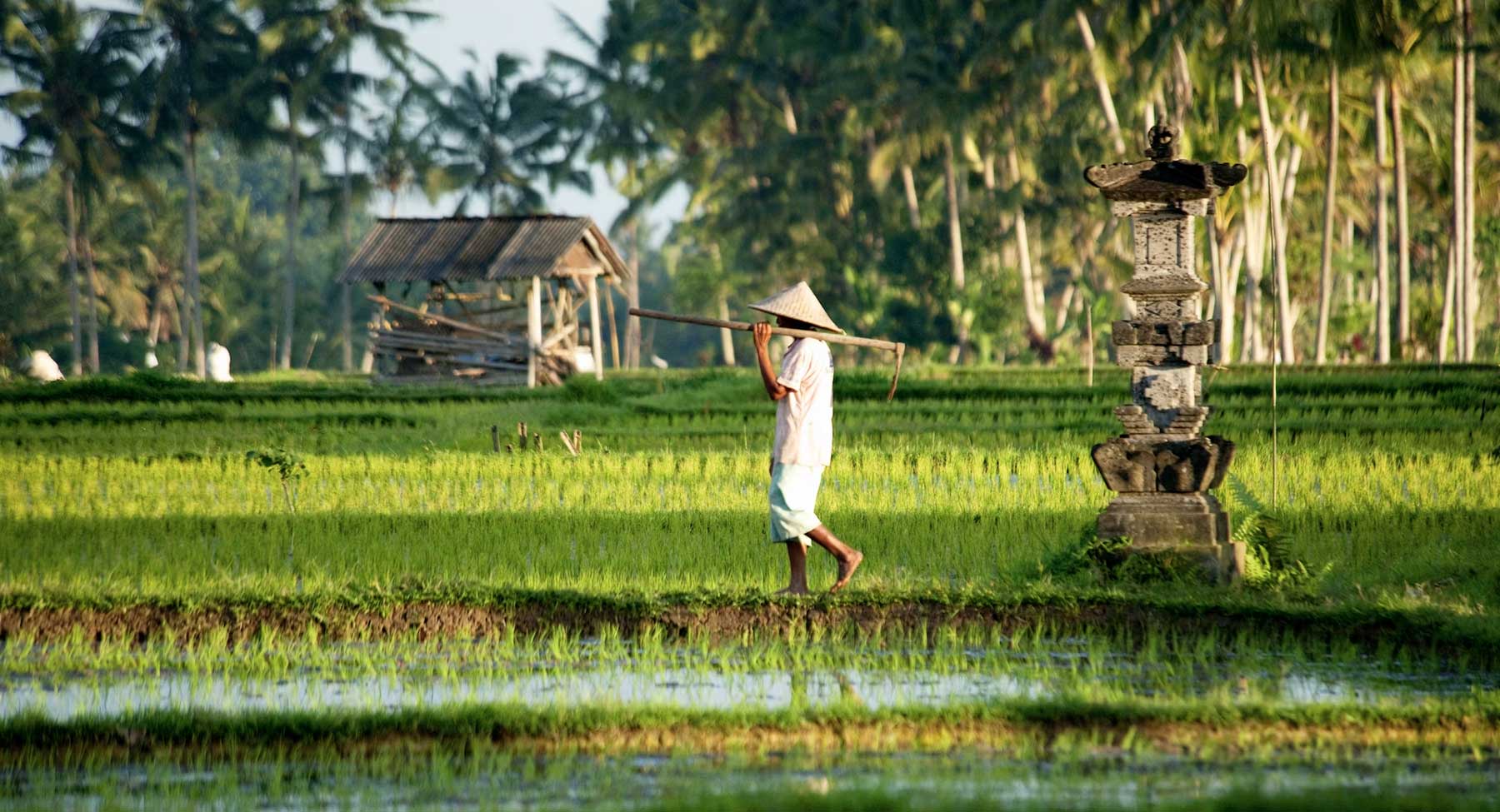Understanding the Balinese calendar
Note that religious festivals such as Galungan and Kuningan are scheduled according to the Balinese 210-day pawukon calendar. This means they happen roughly every seven months according to the western calendar. Dates for village festivals are not always set in stone either, and the timing of the Nyepi festival is dictated by the lunar saka calendar, meaning the date changes every year. If you’re planning a trip around a festival or event, check the precise dates before you book your flights.
January sees a slow-down after the Christmas crush
As the year-end party buzz wears off, international revelers prepare to go home. January in Bali is a good month for laid-back activities and indoor pastimes as the rainy season is at its peak. However, rafting and surfing are especially exciting during the rainy months, with wilder waves because of the influence of monsoon winds. It’s also a good time to explore the attractions of the north and east coast, where the rain is more intermittent.
Key events: Balingkang Kintamani Festival, Chinese New Year (can fall in February)
February brings colorful festivals
At the end of January or the start of February, Chinese New Year celebrations feature spectacular dances and parades with typical Balinese elements such as barong (dancers dressed as lion-dogs) and Balinese percussion bands. Bali has dozens of first-rate museums and art galleries to explore, so if those February downpours put a dampener on outdoor excursions, just head to Ubud where the Arma, Agung Rai and Neka museums and diverse art galleries will keep you entertained for hours.
Key events: Chinese New Year (if not in January), Balingkang Kintamani Festival
The rains start to slow down in March
Bali’s rains start to lay off in March, heralding the arrival of brighter weather. Rafting is especially popular at this time, as mountain streams run at full bore. In preparation for Nyepi, the Balinese New Year, lots of colorful melasti processions happen all over the island, as each village undertakes the ritual cleansing of their temple icons at the nearest beach or holy water source.
On the day before Nyepi, papier-maché puppets called ogoh-ogoh are marched through the streets by joyous crowds and ceremonially burned on the beach. Nyepi is a day of silence and reflection so prepare to spend the day at your accommodations. Bali almost completely closes down, and no one is allowed on the streets.
Key events: Ogoh-Ogoh parades, Nyepi, Omed-Omedan Kissing Ritual
April ushers in the dry season
April marks the beginning of the dry season. Easter school breaks bring many vacationers to Bali for fun and relaxation, and popular tourist areas are thronged, but the remainder of the month is quieter than the summer peak.
Key events: Bali Spirit Festival, Ubud Food Festival
May is a great time for surfers
After Easter, things quieten down again, and May is a great time for outdoor activities. The surfing season is in full swing on the west and south coasts, and rafting, trekking and spelunking beckon to adventure sports fans.
Key events: Buleleng Art Festival
June welcomes the summer crowds
The dry season is well underway, and mild trade winds ensure average temperatures of 28°C to 32°C (82°F to 90°F). June is an ideal time for beach visits and outdoor fun. Mid-June sees the start of the month-long Bali Arts Festival (PKB), a colorful smorgasbord of Balinese art forms including dance, music, drama and pictorial arts. Equally mesmerizing is the festival in Tenganan village, marked by elegant Rejang dances and coming-of-age rituals.
Key events: Bali Arts Festival, Tenganan Pegringsingan Festival
July is peak season for tourism
By July, the tourist high season in Bali is in full swing. Bali’s famous kite festivals, which feature gigantic kites with enormous wingspans flown by competing village troupes, continue through till August and sometimes into September. Celebrations are held all along the east and west coasts, but the most famous kite festival is at Padanggalak Beach, north of Sanur.
Key events: Bali kite festivals
August is dry, sunny and crowded
August is the height of the tourist season, and popular areas such as Kuta, Seminyak, Sanur and Ubud are crowded. If you’re seeking a more laid-back experience, head for the east or north coasts where the vibe is decidedly less frantic. Indonesia celebrates its independence from colonial powers on August 17 with plenty of pomp and fanfare. Expect entertaining parades and street parties in the bigger towns, especially Denpasar.
Key events: Sanur Village Festival, Independence Day, Bali Marathon
September is marked by big music festivals
September is the month to see a calmer side to Bali, without the frenzied tourist crush of the high season. The weather is still gorgeous, although intermittent rain showers indicate that the rainy season is approaching.
Key events: Bali Blues Festival, Soundrenaline Music Festival, Lovina Festival
The rains return in October
The rainy season arrives in October, so plan your schedule accordingly. Have a backup plan ready for trips to beaches and other outdoor activities that may be affected by the weather.
Key events: Nusa Dua Fiesta, Ubud Village Jazz Festival, Ubud Writers and Readers Festival, Bali International Triathlon
November is film festival season
If November rains thwart your beach plans, check out indoor events like Bali’s first-rate international film festival, which includes international releases in a wide variety of cinematic genres.
Key events: Balinale film festival
December welcomes back the holiday crowds
December marks the beginning of the holiday party season, and many hotels, restaurants and other venues organize special dinners and entertainment to mark the festive season. New Year’s Eve is particularly memorable, with spectacular fireworks at midnight to help you rock in the new year in style.
Key events: Pemuteran Bay Festival, Penglipuran Village Festival, New Year’s Eve celebrations

